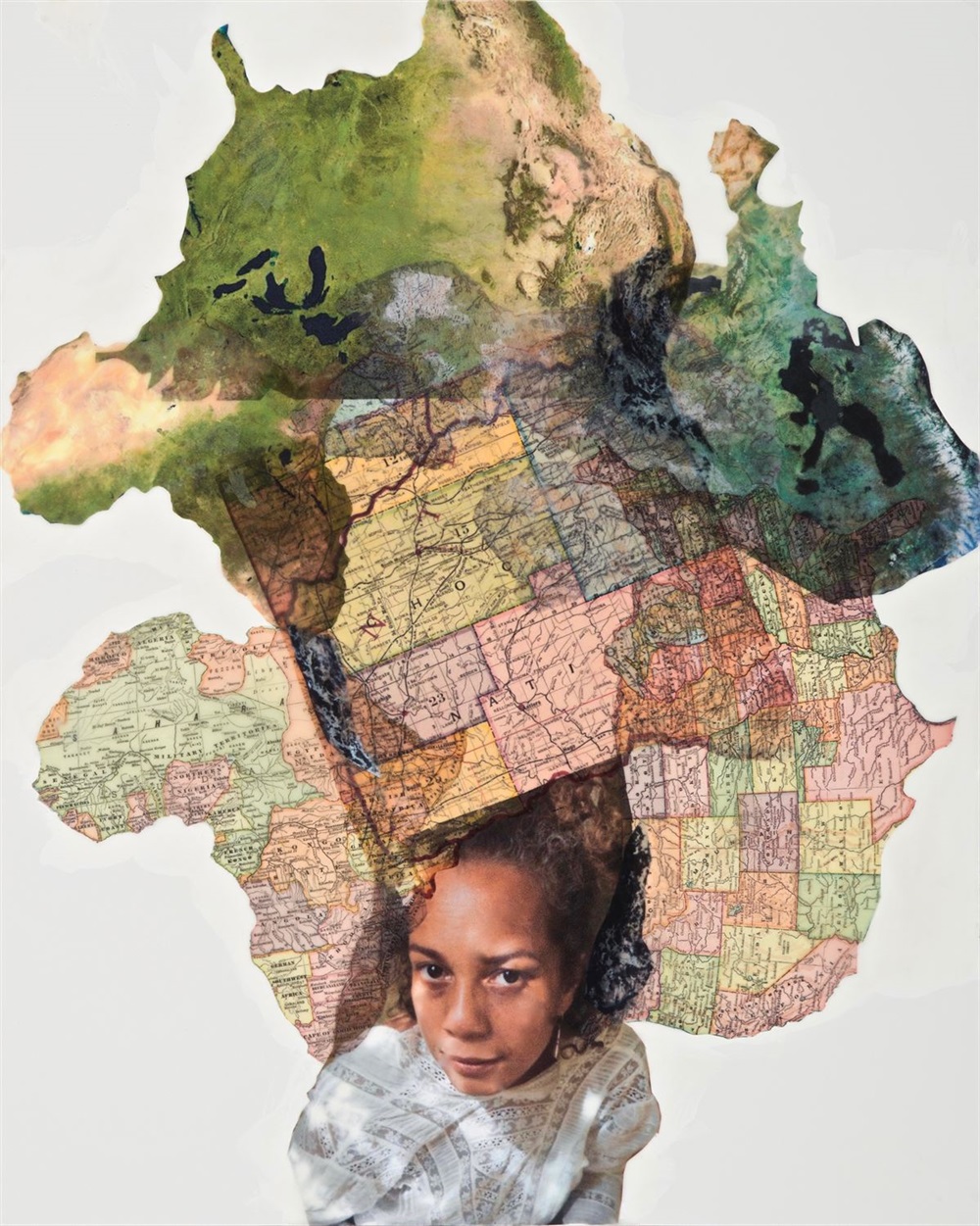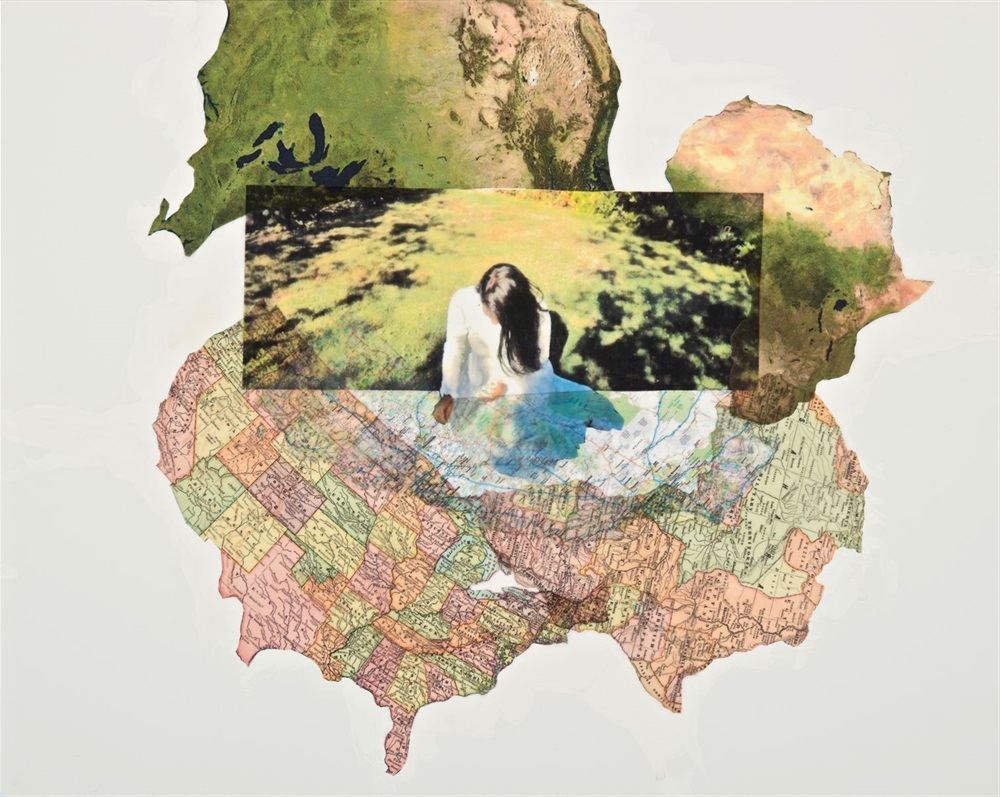
Roar, 1950's pink dress and resin, 2022, 4' in diameter x 6" protrusion in the center
Roar is part of an emerging series I am calling Surreal Textiles in response to the reversal of Roe v Wade. Drawing from Surrealist strategies of strange juxtapositions, disorientation, the unexpected, and the uncanny as a way to depict psychological tensions and unconscious motivations and desires.

Great Again, 1950's dickey shirt, beeswax, damar and resin, 2022
Great Again is part of an emerging series I am calling "Surreal Textiles." Drawing from Surrealist strategies of strange juxtapositions, disorientation, the unexpected, and the uncanny as a way to depict psychological tensions and unconscious motivations and desires. The dickey garment or false shirt as a medium allows me to engage with contemporary semiotics of racism. A linguistic term, semiotics is broadly the study of signs and symbols and their use and interpretation. Great Again is a dickey splayed open making the false shirt or false front shield like. The work is titled pointedly pairing altruistic terms that obfuscate or mask intentions, policies and behaviors that target and harm people of color.

Frances Ellen Watkins Harper, 19th Century blouse, beeswax, damar, resin approximately 17 x 20 x 14, 2020-2022
Harper was a poet and author and lecturer who worked as an influential abolitionist and black suffragist.

Nestled in Identities, photograph of the artist, historical, contemporary, and satellite maps of America, Africa, and Sweden printed on rice paper and beeswax on wood panel, 16 x 20 ", 2019
Identity Mapping Series are intergenerational portraits of Cynthia Brannvall’s family members collaged with historical, contemporary, and satellite maps from the countries and continents of her heritage. The range of maps include “outdated” versions with countries that no longer exist or illustrate first nation territories in what would become the United States of America. It is a visual exploration of the artists interest in the instability of place in regard to notions of nativism and identity. The first nation peoples offer an understanding of identity as connected to seven generations before and seven generations forward. Brannvall considers this in terms of the geography and nationalism of her ancestry and concludes that it is more accurate to understand identity formation and the concept of belonging as an unstable journey. For the artist, intergenerational identity and belonging are a path that meanders through time and place with changing borders, political systems, names, and dates that are determined by exploration, conquest, colonialism, opportunity, lust, and love.

Daughters, photograph of the artists daughter, historical, contemporary, and satellite maps of America, California, Africa, and Sweden printed on rice paper and beeswax on wood panel, 16 x 20 ", 2019
(see "Identity Mapping Series" description above)

The Threads That Bind A Divided Nation, vintage and antique textiles painted on stretched crinoline, white thread in long stitches. 36 x 58", 2020
(Statement for Threads That Bind A Divided Nation)The materials that create form in an artwork presents an added layer of meaning. I was raised primarily by my grandmother who was born in 1908, and was an extraordinary seamstress. Textiles have been in my hands for as long as I can remember and they are potent signifiers: labor, trade, industry, slavery, luxury, baptisms, weddings, funerals, gender, and history. My engagement with textiles is between craft and fine art, the past and the present, painting and sculpture, landscape and portrait, history and the present. In particular, I explore the contradictions of whiteness in textiles as something pure, stained, fragmented, constructed, degraded, broken and enduring.